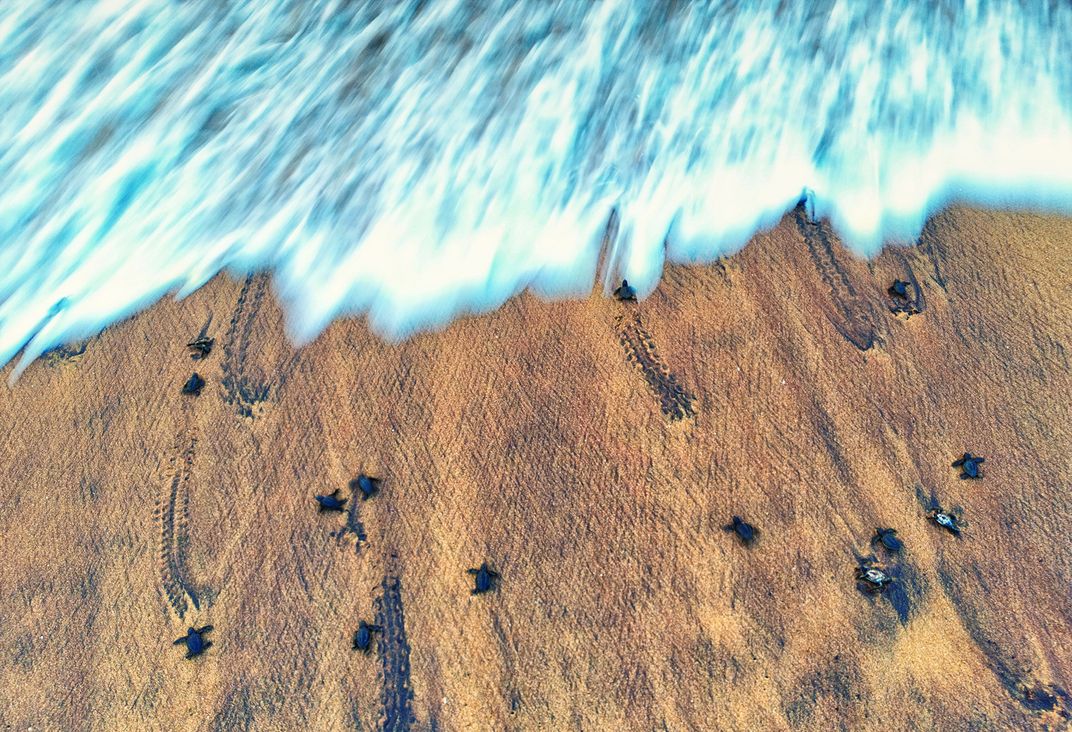The Olive Ridley sea turtle (Lepidochelys olivacea) is listed as a vulnerable species by the IUCN. These turtles spend their entire lives in the ocean and migrate thousands of kilometers between feeding and mating grounds in the course of a year. The major threats to this species include fisheries bycatch, habitat degradation, and the unsustainable harvest of eggs. Some Olive Ridley females nest solitarily and others do mass nesting. In India, the mass nesting of Olive Ridley can be observed in a few coastal areas. The largest among them happens in Odisha. About 6.37 lakh Olive Ridley sea turtles have arrived for mass nesting at the Rushikulya coast this year (2023). Olive Ridley turtles dig holes on the beach with their front flippers for hours. Subsequently, they use their hind flippers to scoop out sand to create a cavity. They lay dozens of eggs at one go and cover them again with sand. Before sunrise, the turtles return to the sea, leaving behind the eggs, which would hatch after 40-60 days. But yearly mass nesting or Arribada (which means "arrival" in Spanish) at Odisha has exhibited a decrease over the past 15 years, which has been attributed in part to the particularly low hatching success at this beach (8%). But even after successful hatching the hatchlings has to face a mammoth task to reach the open sea. Their journey is full of hurdles and constant threat of death. Approximately one among the thousand hatchlings makes its way to adulthood. The newborn Olive Ridley turtles used to be eaten by non-native and native predators (particularly feral dogs, birds, and crabs), Newborns are also killed by jellyfish and other creatures even before they start their long journey to adulthood. which is a major threat to Olive Ridley sea turtles. Thousands of baby turtles died by fishing gear, which can result in drowning or cause injuries that lead to death. Also increasing pollution of nearshore and offshore marine habitats threaten all sea turtles including Olive Ridley and degrades their habitats.
| Date Taken: | 04.2023 |
| Date Uploaded: | 11.2023 |
| Photo Location: | India |
| Camera: | FC3582 |
| Copyright: | © Kallol Mukherjee |


